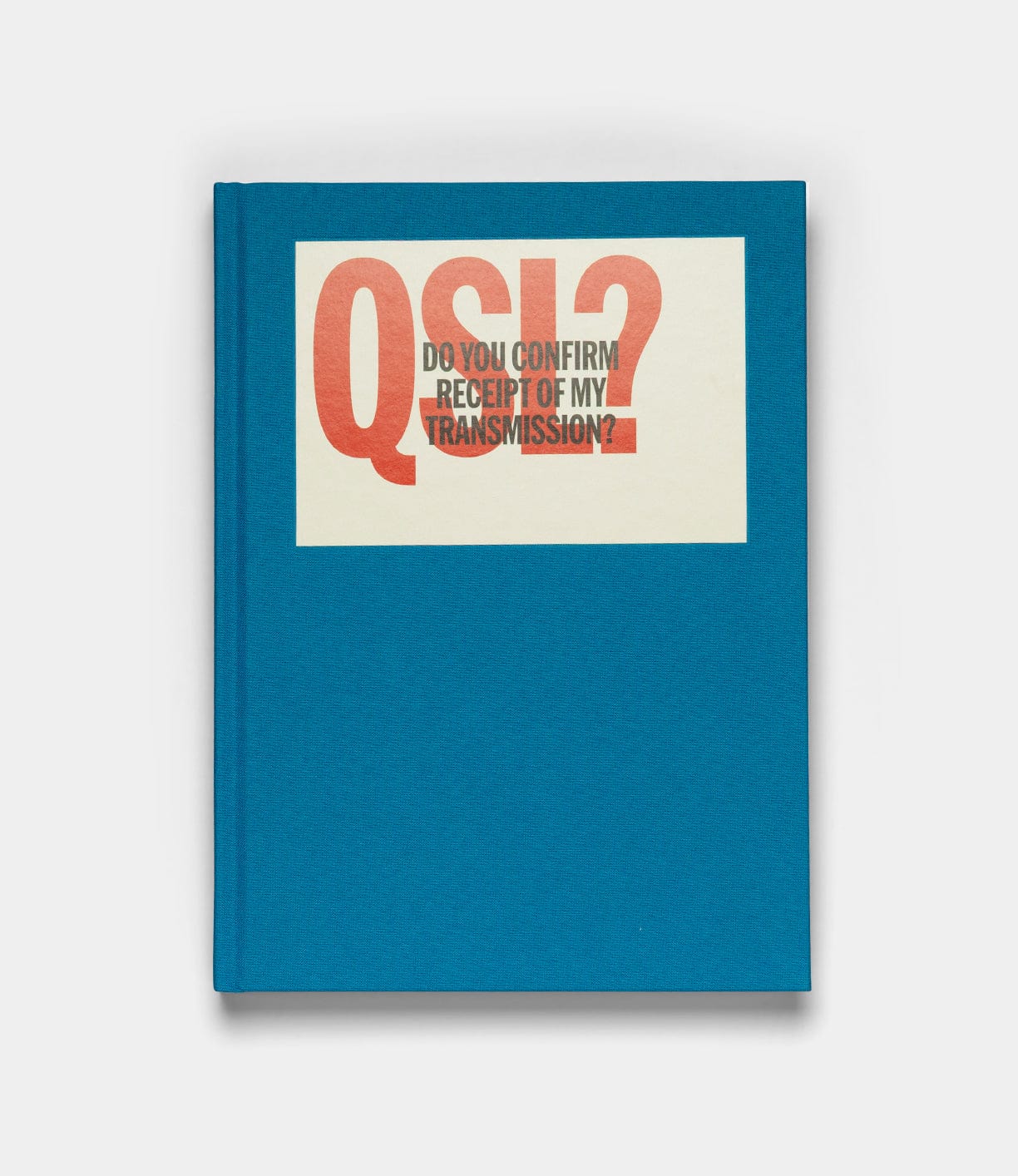
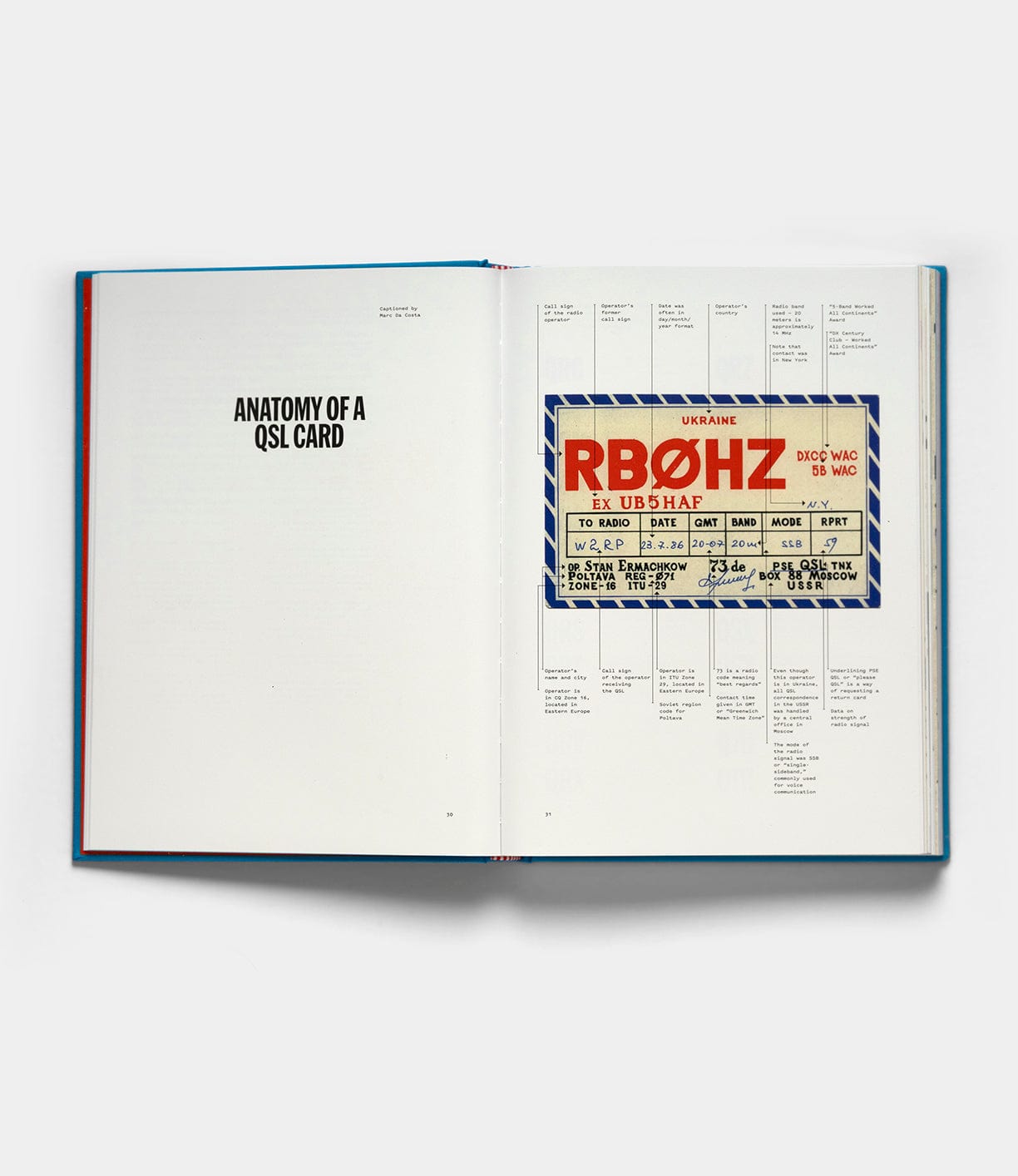
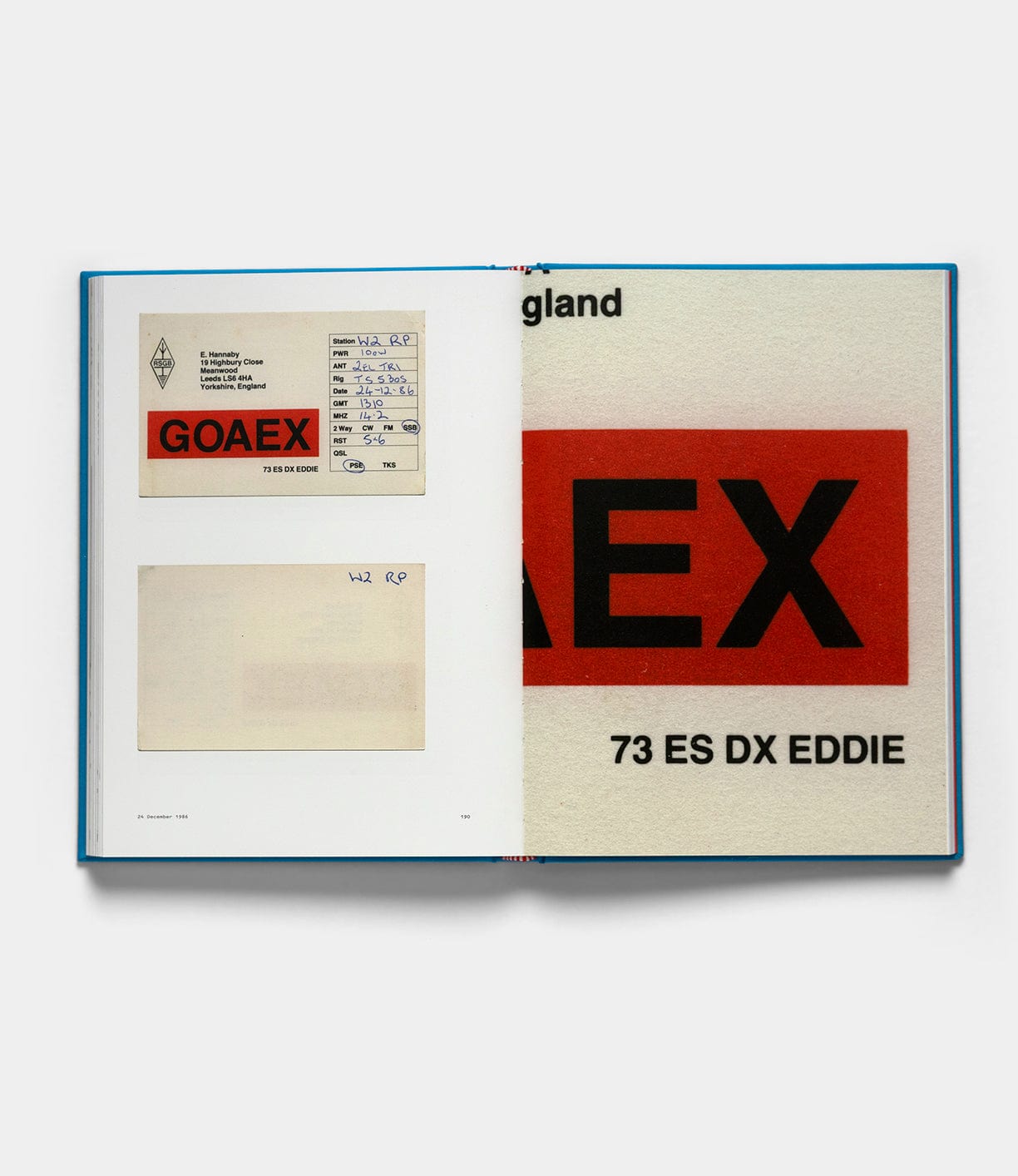
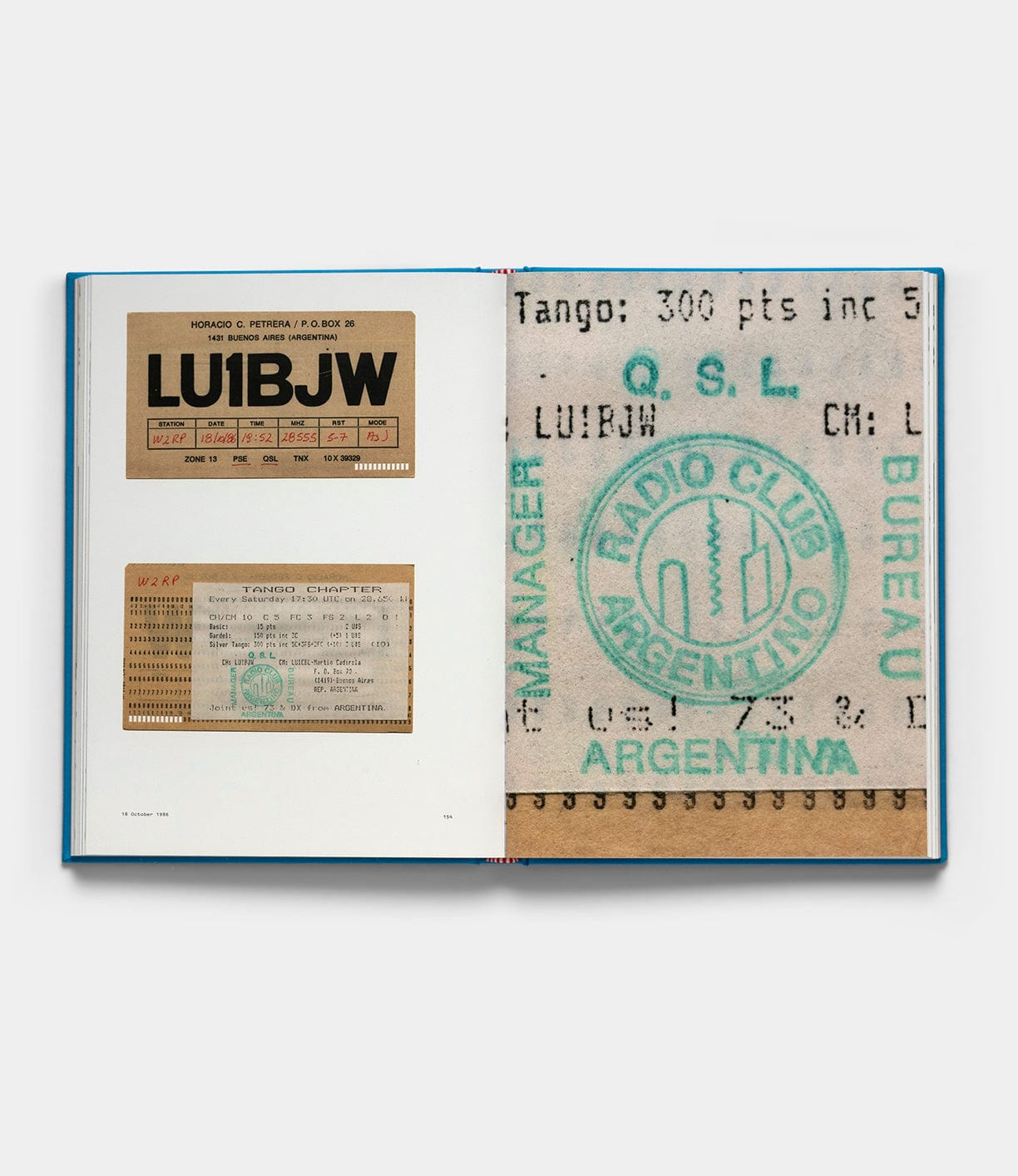
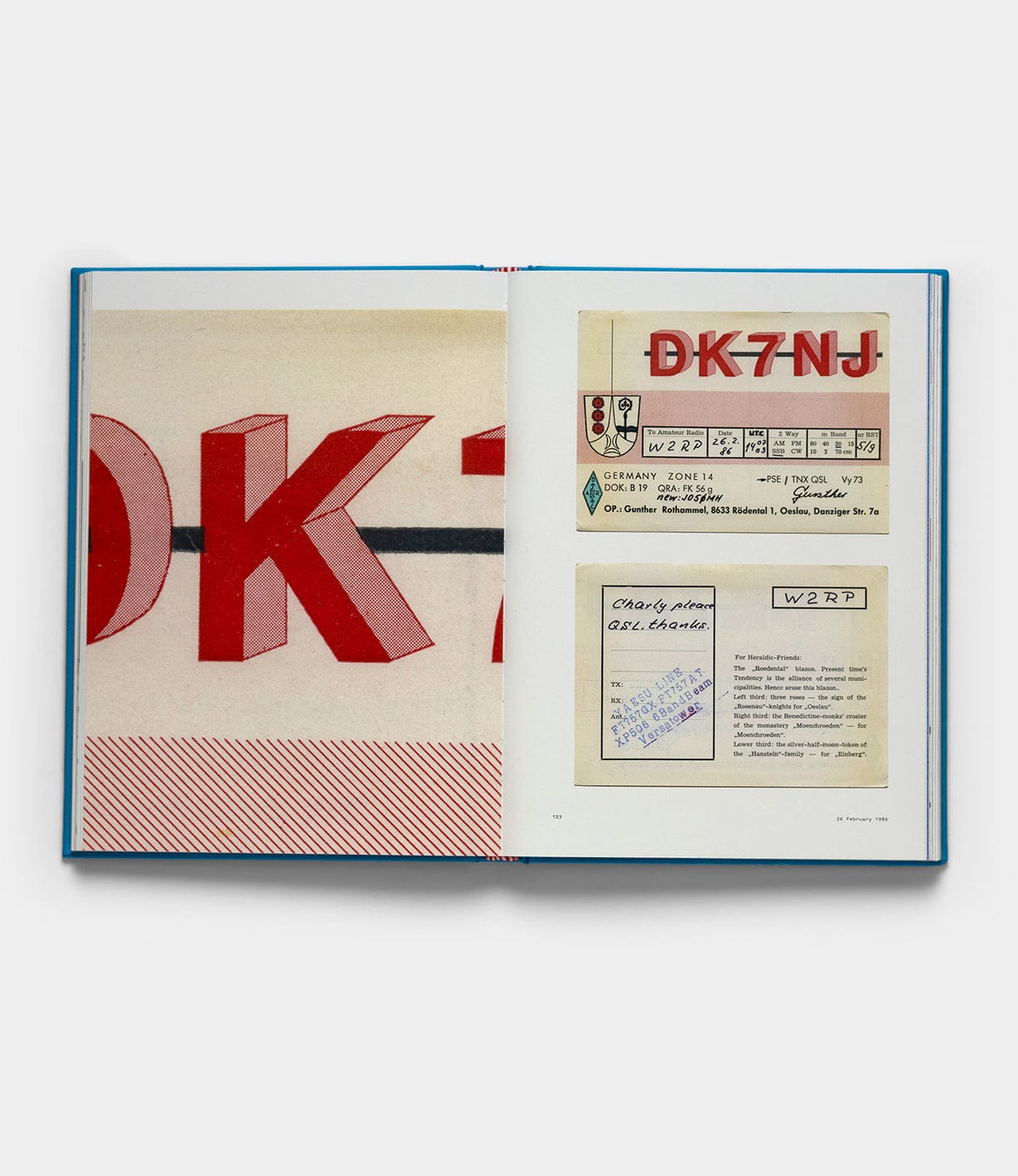
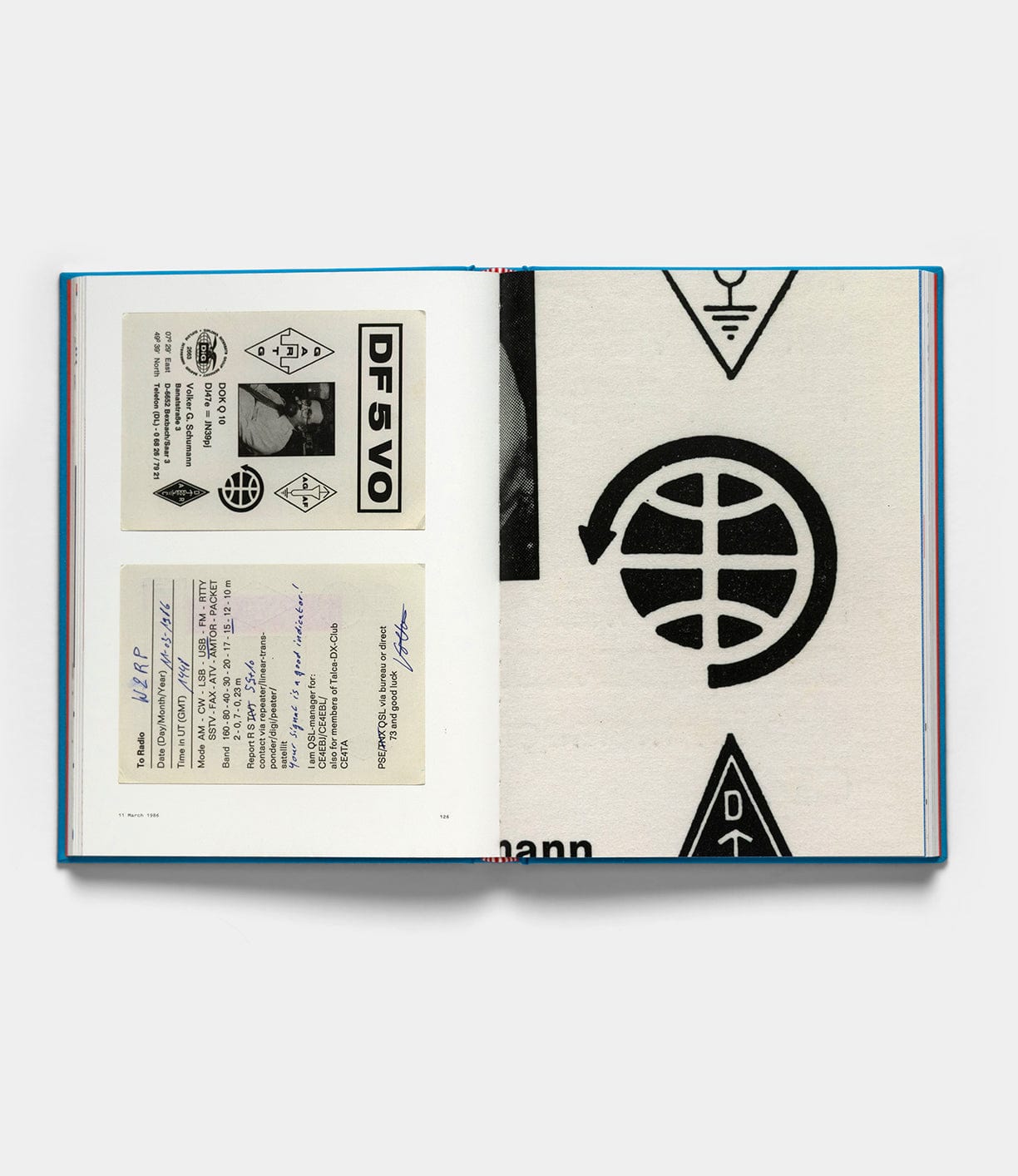
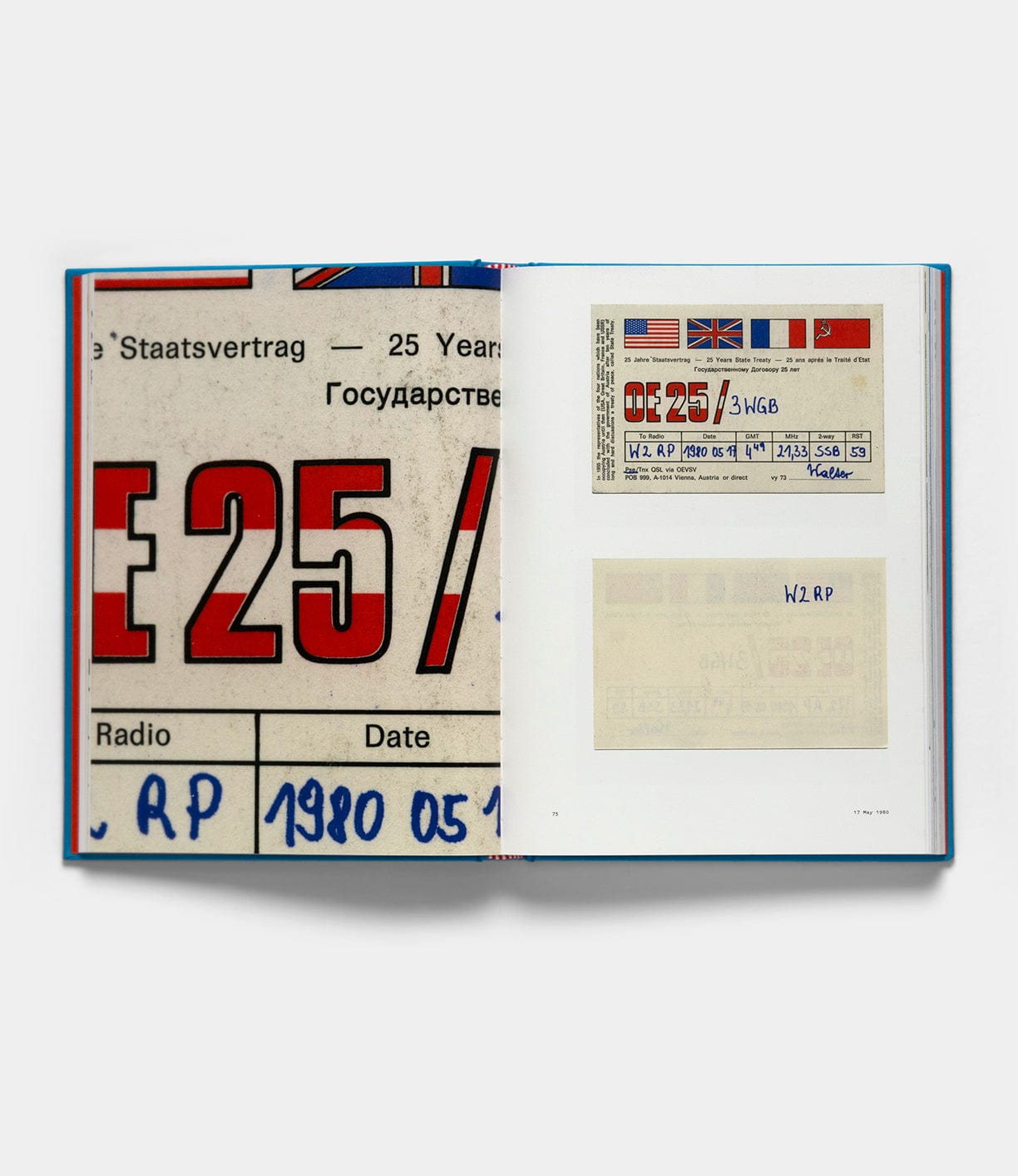
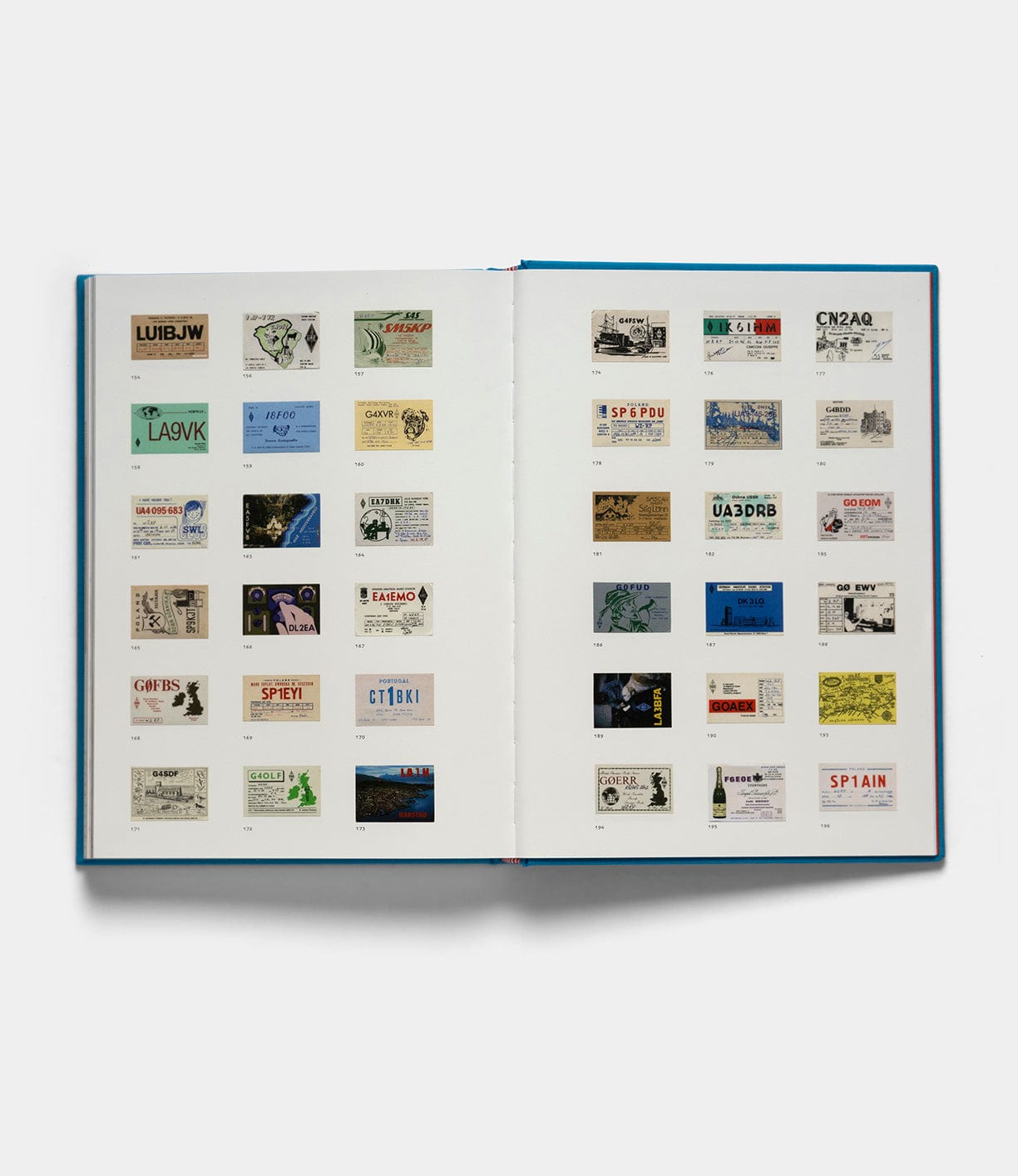
Named after the radio Q-code "QSL" meaning "I acknowledge receipt," these postcard-sized cards were exchanged after operators made contact across the airwaves, with each card typically featuring the sender's call sign, contact details (frequency, time, date, signal strength), and often colorful graphics representing their location, local landmarks, or personal interests. Before digital logging and internet verification systems, QSL cards were the primary way ham radio operators could confirm their contacts for awards, contests, and record-keeping—creating a global postal network that paralleled the radio waves, where operators would mail these cards to each other as tangible proof of their invisible electromagnetic connections spanning continents and cultures.
-Stochastic screen
-Case-bound
-Front and back cover tip-ins with silkscreened spine
-Cloth wrapped
-Case-bound
-Front and back cover tip-ins with silkscreened spine
-Cloth wrapped
8 x 11 in
Printed in Italy







